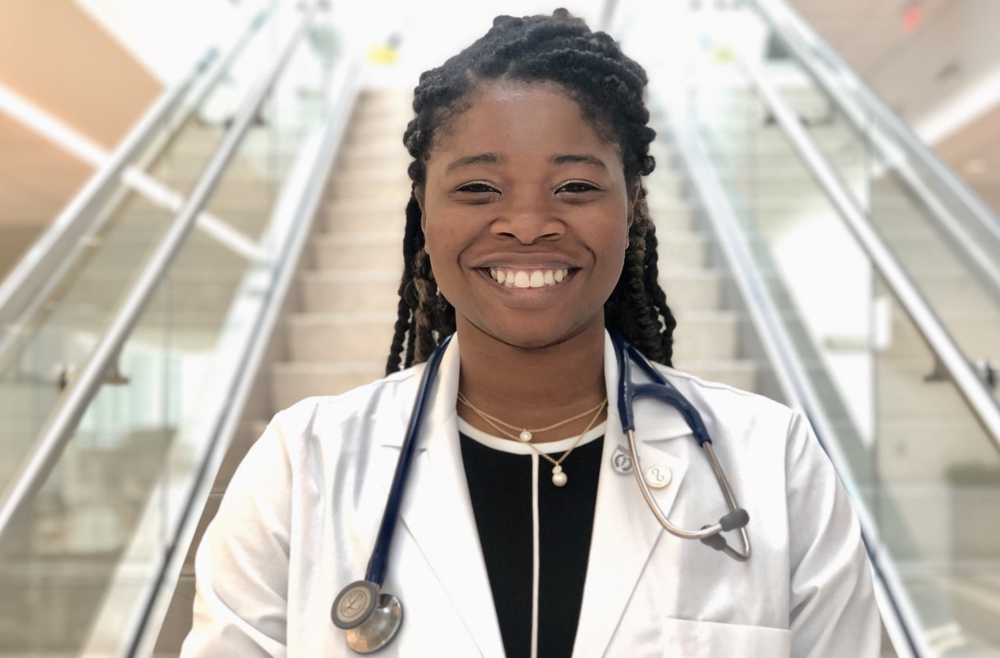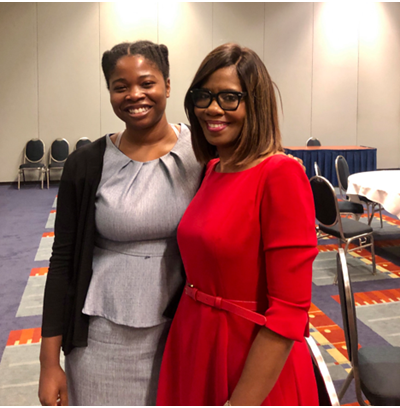Shining Light on the Untold Stories of Black Women in Medicine

[ad_1]

Perelman School of Medicine students come from many different walks of life and have different experiences that brought them here. Jasmine Brown is the author of recently released book “Twice as Hard: The Stories of Black Women Who Fought to Become Physicians, from the Civil War to the 21st Century.” Twice as Hard brings the spotlight to the stories of Black women in medicine whose stories often go overlooked.
Brown’s journey to this point began when she became fascinated by neuroscience in high school. “I was amazed by how the brain worked and how it played such a central role in our ability to live and experience the world around us. My passion for neuroscience spurred an interest in a medical career,” she said. In college at Washington University, she explored this interest more, including by volunteering and shadowing in clinical settings. “I felt fulfilled by my ability to use my passions for science and physiology to improve the lives of others.”
Also during her undergrad years, though, Brown says that she was the target of microaggressions that made her feel at times unwelcome in medical and scientific spaces. Brown’s personal experiences and observations of other Black students led her to want to study racism in the scientific and medical field to better understand why this still happens.
When she was selected to receive a Rhodes Scholarship to study at Oxford University, she had the opportunity to pursue that goal. Brown realized that there wasn’t much scholarly work that focused on Black women physicians. She decided to dedicate her time at Oxford to highlighting the experience of Black women in medicine. Brown focused her Master’s dissertation on social and structural barriers that have prevented Black women from entering medicine throughout the U.S. While completing her research she visited libraries at many prestigious medical schools.
During her research, she found a large book on Black Physicians that had over 100 profiles. Fewer than five of the profiles were Black women. She was inspired by the stories of Black women who had overcome so many obstacles and were able to have a great impact in medicine. A few of the women who inspired Brown were Edith Irby Jones, the first Black student of any gender to integrate a southern medical school, and Joycelyn Elders, who was the first Black woman to serve as the U.S. Surgeon General.

Brown had never heard of any of these stories while in school — and they provided a spark of inspiration for her to tell more such stories in a book. “I felt privileged to have had the opportunity to learn about these women while I was at Oxford,” Brown explained. “I wanted young people facing obstacles of their own to be able to learn about these Black women, and to find hope in their stories. It wanted them to see that despite the barriers that they were up against, they could still achieve their dreams and have an incredible impact in society.”
Brown had two major goals for publishing this book. She wanted to highlight minority physicians whose stories are rarely taught in schools and give students from underrepresented backgrounds role models that they can identify with. Secondly, she wanted to show the historical basis of the social and structural barriers in medicine that persist today.
“I hope to provide academic institutions with specific ways that they can work to address this disparity in representation at the medical, residency and faculty levels,” said Brown.
Brown sees several different ways to increase the representation of Black women in medicine. One thing, which she is helping to do through her book, is to raise awareness of the underrepresented minorities who have made an impact and had successful careers in medicine. These people can serve as role models to motivate students to go after their dreams despite some obstacles they may face. She also points out the importance of connecting students with mentors who they can identify with to help them navigate the challenges they may face. Lastly, Brown thinks that higher education institutions can work to create a safe place for students with marginalized identities. If these institutions help provide students with role models and mentors, they can help students from marginalized identities reach their full potential.
Brown hopes her book will help inspire minority students across the country to reach for goals in medicine. She also hopes that the book helps to raise general awareness of the prejudices and discrimination that shaped the lives of the remarkable women she profiled, and that still affect minority students across the country today.
In Telling Your Health Story, a Philadelphia Inquirer virtual event, Brown stated “You can’t be what you can’t see.” While she continues to live out her own story and works toward starting her own medical career, it’s with the hope that this book will help shed light on the many Black women physicians whose stories have gone untold for years.
Explore related stories:
[ad_2]
Source link
